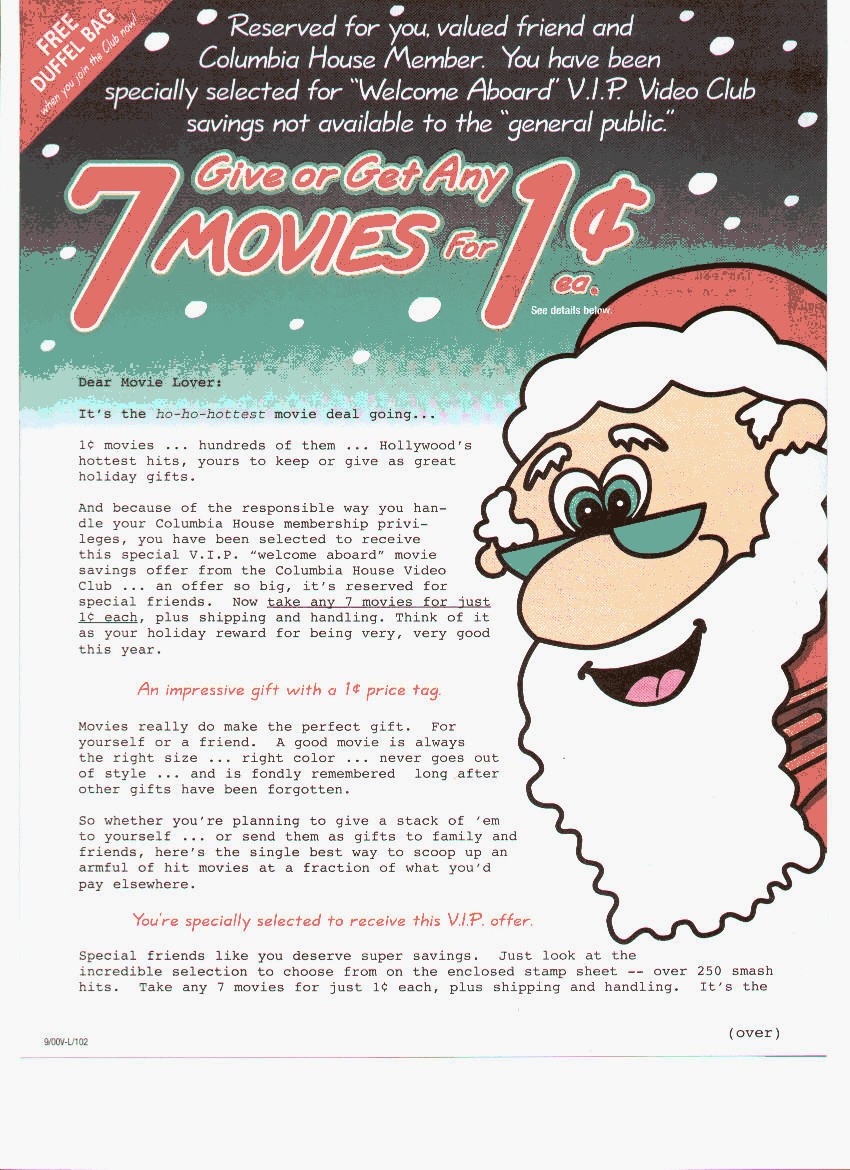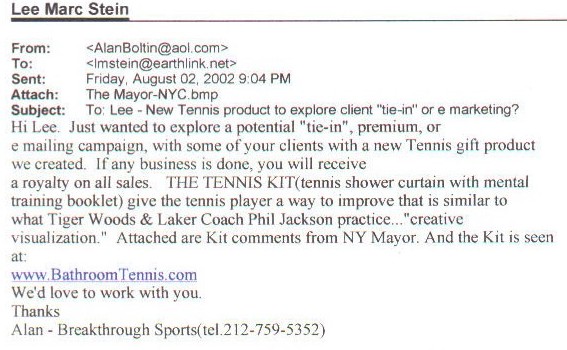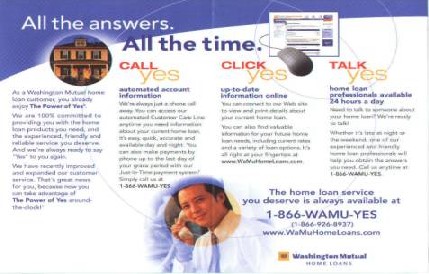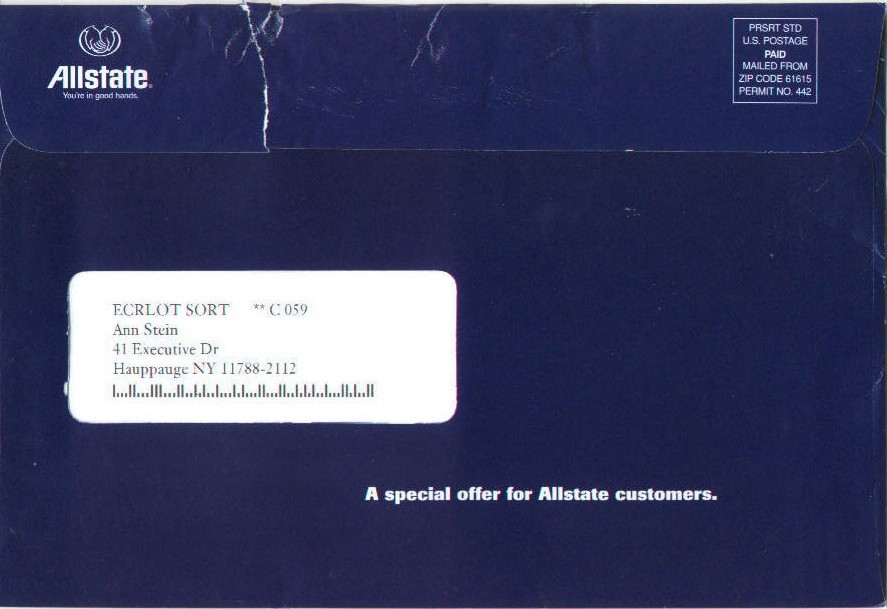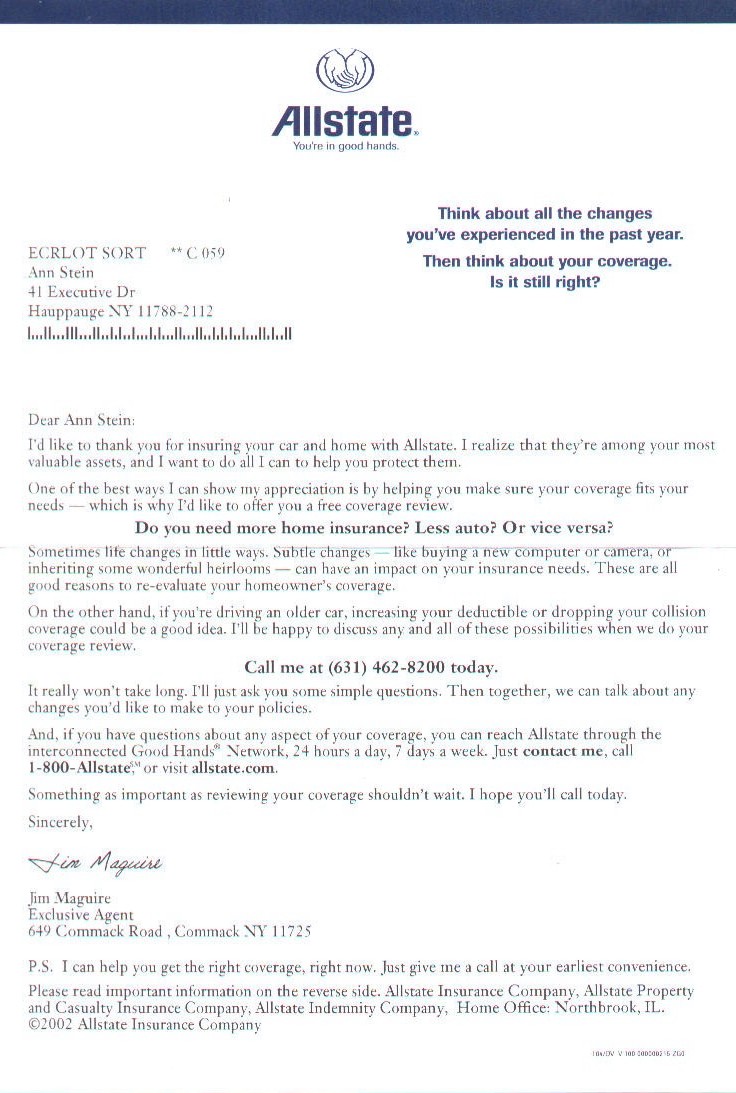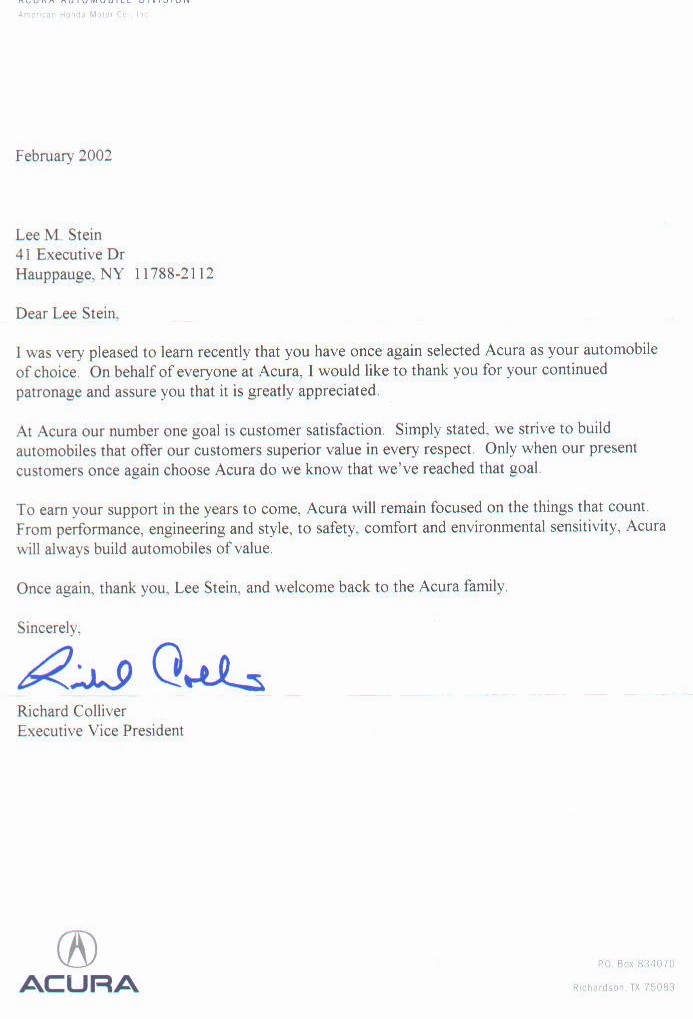Before you release any communications to prospects or customers, gauge how your copy scores on the B/S Index. What is the B/S Index? It's not what you think it is—not the "Bull Shit" Detector, but the Believability/Simpatico Index.
There are five components to the Index.
1. The "Taxi Driver" Factor
You know the DeNiro line, "Hey, are you talkin' to ME?" Sometimes we get communications from marketers and we wonder if they are, indeed, talking to us or to the proverbial man in the moon.
The following letter arrived at my house a full five years after my daughter had left home. When she lived with us, she was constantly being hounded by Columbia House for not paying her bills on time.
So you look at the headline—"valued friend" and "savings not available to the 'general public'"—and at the beginning of the third paragraph and you laugh. There is no believability here.
Contrast that to the email below:
It's believable because the sender knows who I am. He knows I am not just involved in marketing but that I'm a marketing consultant. It's respectful of my time, and it realizes that I'm in business to make money.
2. The Caller ID Factor—"WHO'S that talkin' to me?"
Particularly if you're talking to customers, you want to make it clear who you are and why you're communicating at this particular point. You want to give customers access to you any way they want it.
Washington Mutual's brochure does a good job of communicating accessibility, as untrue as that promise turned out to be.
3. The "How" Factor—"HOW are you talkin' to me?"
Copy, graphics, offer, tone should all indicate to recipients that you know who they are. You do not speak to a prospect in the same way you speak to a long-term buyer. If your database is big enough to warrant it, you communicate differently with customers who have spent $10,000 with you than with those who spent $100.
So here's a package from Allstate. The address side of the outer envelope would indicate they're trying to sell you something. The picture window shows a computer mouse.
And yet, inside, we find this highly personalized letter, a true customer communication:
That's the kind of mixed voice you want to avoid.
Look at the simplicity of this "Thank you" letter from Acura. It is so artful that it appears to really have been written by the person who signed it.
4. "What exactly are you talkin' about?"
You want to look at the context of your message. Is it relevant to your customer's life-stage? Customer stage? Is the offer really clear?
5. "Why is it I should let you keep talkin'?"
It is not enough for a direct marketing message to merely attract attention. You've got to do other things to buy yourself enough time to sell the prospect on responding to the offer. Getting the prospect to nod in agreement means you scored high on the B/S index.
